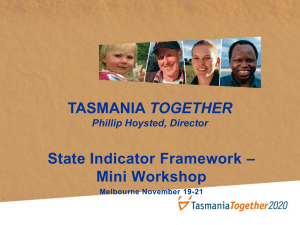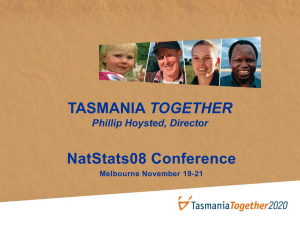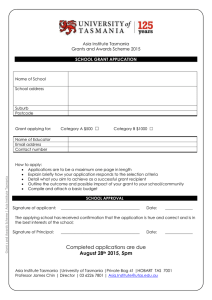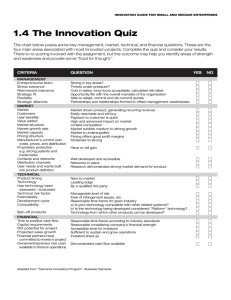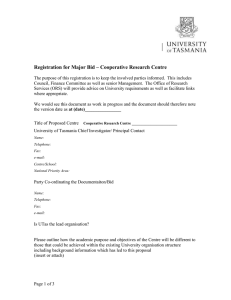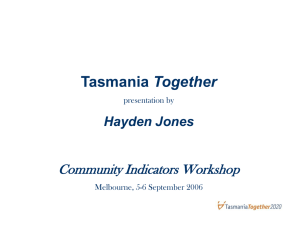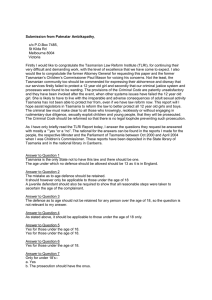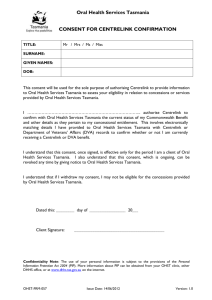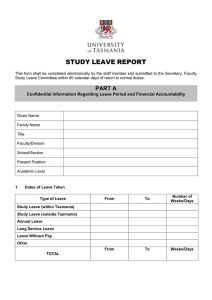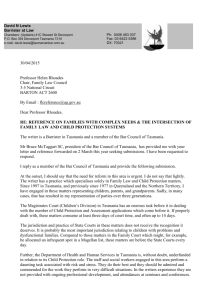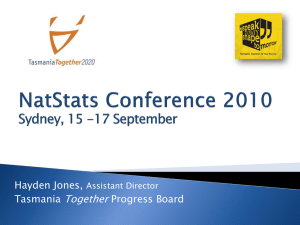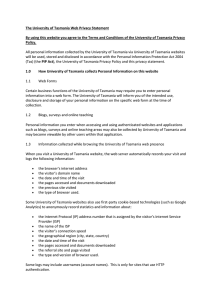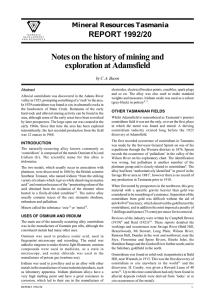2008_11_13 State Indicator Frameworks Mini Workshop.doc
advertisement
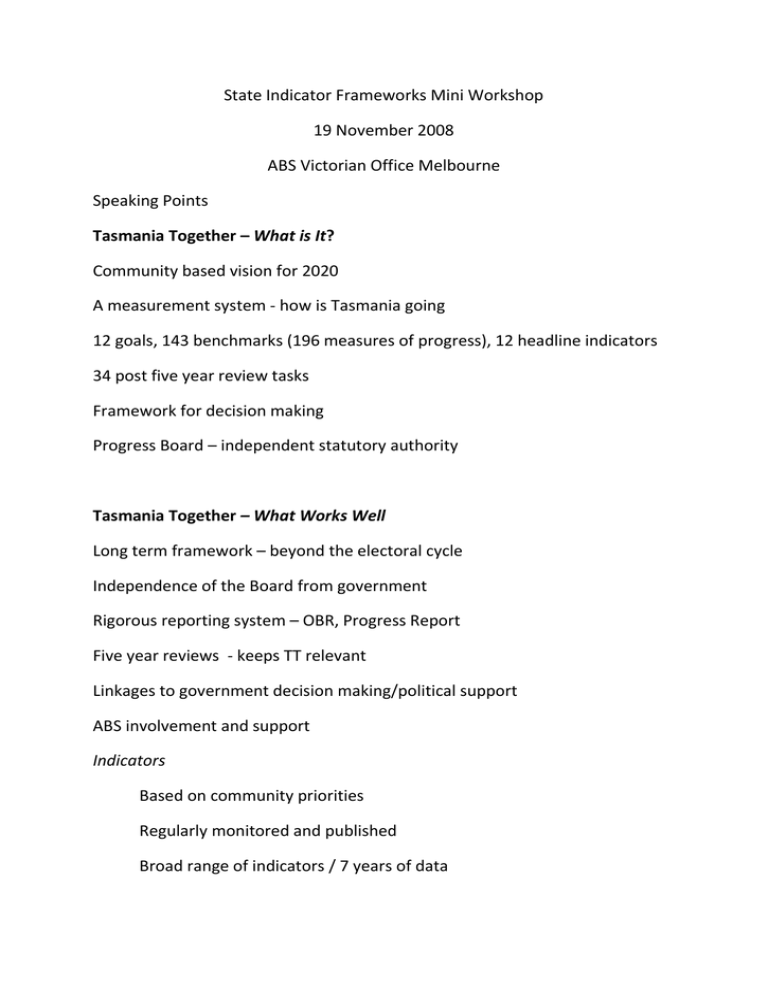
State Indicator Frameworks Mini Workshop 19 November 2008 ABS Victorian Office Melbourne Speaking Points Tasmania Together – What is It? Community based vision for 2020 A measurement system - how is Tasmania going 12 goals, 143 benchmarks (196 measures of progress), 12 headline indicators 34 post five year review tasks Framework for decision making Progress Board – independent statutory authority Tasmania Together – What Works Well Long term framework – beyond the electoral cycle Independence of the Board from government Rigorous reporting system – OBR, Progress Report Five year reviews - keeps TT relevant Linkages to government decision making/political support ABS involvement and support Indicators Based on community priorities Regularly monitored and published Broad range of indicators / 7 years of data Tasmania Together – Biggest Frustrations Community awareness and engagement Front end decision making Integration into the budget process Indicators Availability of good sub-state level data - Help engage the community - Local government level. Local level data project. - Problems with sectors of the community aged, disability, Aboriginal Obtaining qualitative or attitudinal data - Community survey – quality of life, social inclusion, perceptions of govt accountability, belong to local community Data availability often lags behind community priorities - 34 post five year review tasks - Climate change, energy and water managment National surveys – sample size can often be too small to be useful to smaller states. - Need more oversampling Timeliness of data - GSS from 4 to 6 years - Adult literacy - every 10 years Tasmania Together – Where Would Like Assistance A greater focus on provision of sub-state level data COAG – agreed common definitions/approaches at the COAG level would lead to improve interstate comparisons being made. 14 of TT benchmarks involve interstate comparisons. NSS – common definitions and sharing of data - Increase availability of data - Expand pool of providers - Problem in state agencies and between local and state government. More oversampling of smaller states to provide meaningful information Improving communication/information flows - Sharing and disseminating information – Northern Development/OYA, TT/SIU - Better networking Community engagement - How do we make data/statistics understood and accessible to the broader public - How do we show linkages between data and decision making - How do we promote evidence based policy development.
